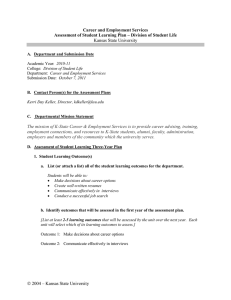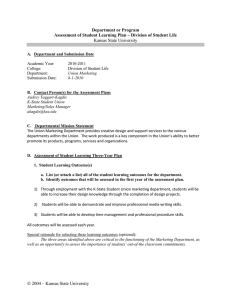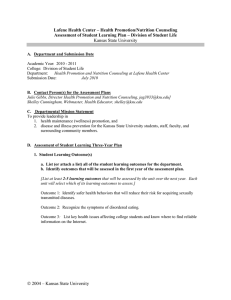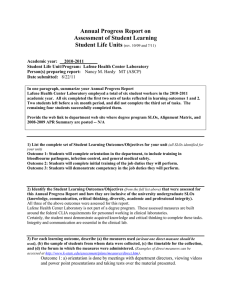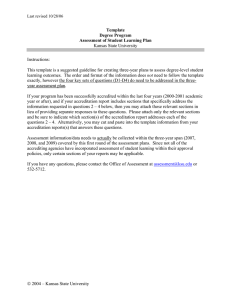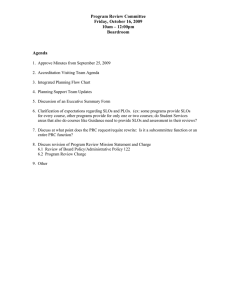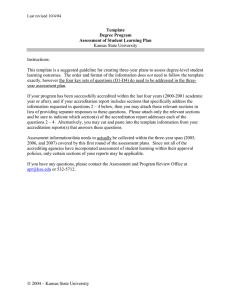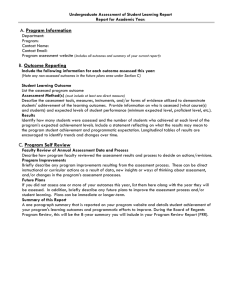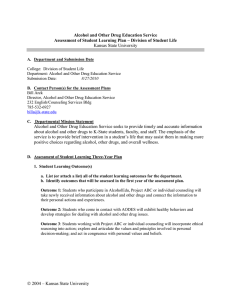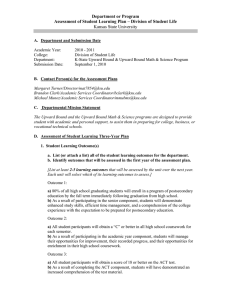Kansas State University Department or Program
advertisement
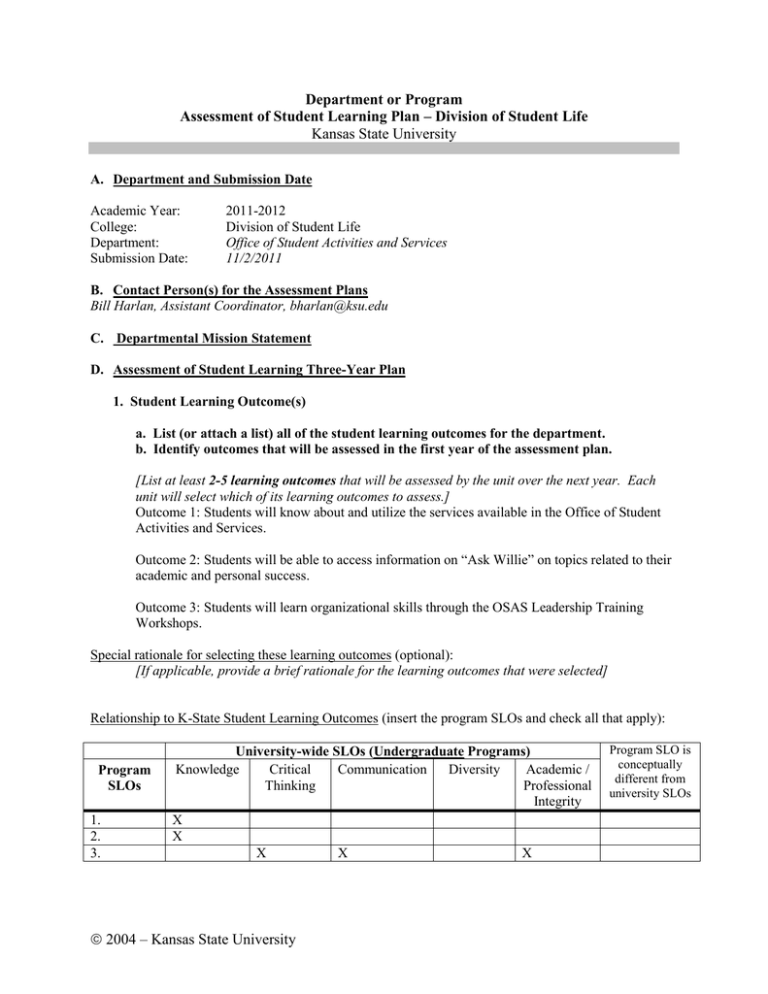
Department or Program Assessment of Student Learning Plan – Division of Student Life Kansas State University A. Department and Submission Date Academic Year: College: Department: Submission Date: 2011-2012 Division of Student Life Office of Student Activities and Services 11/2/2011 B. Contact Person(s) for the Assessment Plans Bill Harlan, Assistant Coordinator, bharlan@ksu.edu C. Departmental Mission Statement D. Assessment of Student Learning Three-Year Plan 1. Student Learning Outcome(s) a. List (or attach a list) all of the student learning outcomes for the department. b. Identify outcomes that will be assessed in the first year of the assessment plan. [List at least 2-5 learning outcomes that will be assessed by the unit over the next year. Each unit will select which of its learning outcomes to assess.] Outcome 1: Students will know about and utilize the services available in the Office of Student Activities and Services. Outcome 2: Students will be able to access information on “Ask Willie” on topics related to their academic and personal success. Outcome 3: Students will learn organizational skills through the OSAS Leadership Training Workshops. Special rationale for selecting these learning outcomes (optional): [If applicable, provide a brief rationale for the learning outcomes that were selected] Relationship to K-State Student Learning Outcomes (insert the program SLOs and check all that apply): Program SLOs 1. 2. 3. University-wide SLOs (Undergraduate Programs) Knowledge Critical Communication Diversity Academic / Thinking Professional Integrity X X X X X 2004 – Kansas State University Program SLO is conceptually different from university SLOs 2. How will the learning outcomes be assessed? What groups will be included in the assessment? [Briefly describe the assessment tools, measures, or forms of evidence that will be utilized to demonstrate students’ accomplishment of the learning outcomes selected in the one-year plan. Also indicate whether each measure is direct or indirect. If you are unsure, then write “Unsure of measurement type”. There is an expectation that at least one of the assessment methods/measures will be direct measures of student learning (see Measures, Rubrics, & Tools for Assessing Student Learning Outcomes on the APR website for examples of direct and indirect measures).] Outcome 1: Usage statistics for Student Legal Services, Consumer and Tenant Affairs, Powercat Financial Counseling Center, SafeRide, Ask Willie, and web statistics. Outcome 2: Provide feedback survey at end of email responses to measure if information was helpful and answered student’s question. Outcome 3: At the end of each training workshop, students will complete a questionnaire about what they learned and what skills they developed. 3. When will these outcomes be assessed? When and in what format will the results of the assessment be discussed? [Briefly describe the timeframe over which your unit will conduct the assessment of the learning outcomes selected for the one-year plan. For example, provide a layout of the semesters or years on which outcomes will be assessed, and which semester/year the results will be discussed and used to improve student learning (e.g., discussed with faculty, advisory boards, students, etc.] Outcome 1: This year and then every other year. Outcome 2: The responses to the feedback survey will be reviewed at the end of every year. Outcome 3: At the end of every academic year. 4. What is the unit’s process for using assessment results to improve student learning? [Briefly describe your process for using assessment data to improve student learning.] Outcome 1: Review usage statistics to form strategies for the next period. Outcome 2: Staff will review the answers and use them to create a list of frequently asked questions. Outcome 3: Results will be discussed at staff meetings at the beginning of summer term and will be used to determine which workshops will be presented in the next year. Revised – Division of Student Life 2011 2004 – Kansas State University
